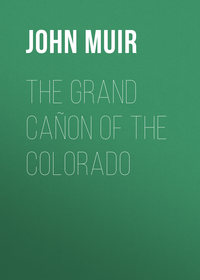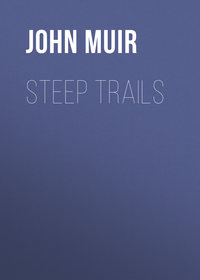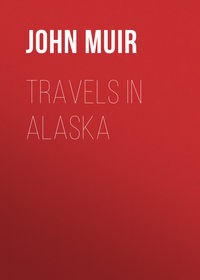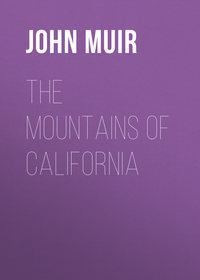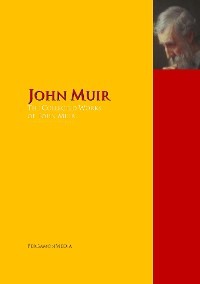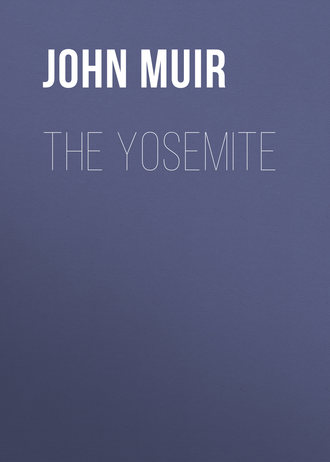 полная версия
полная версияThe Yosemite
The first application to the Government by the San Francisco Supervisors for the commercial use of Lake Eleanor and the Hetch Hetchy Valley was made in 1903, and on December 22nd of that year it was denied by the Secretary of the Interior, Mr. Hitchcock, who truthfully said:
Presumably the Yosemite National Park was created such by law because within its boundaries, inclusive alike of its beautiful small lakes, like Eleanor, and its majestic wonders, like Hetch Hetchy and Yosemite Valley. It is the aggregation of such natural scenic features that makes the Yosemite Park a wonderland which the Congress of the United States sought by law to reserve for all coming time as nearly as practicable in the condition fashioned by the hand of the Creator–a worthy object of national pride and a source of healthful pleasure and rest for the thousands of people who may annually sojourn there during the heated months.
In 1907 when Mr. Garfield became Secretary of the Interior the application was renewed and granted; but under his successor, Mr. Fisher, the matter has been referred to a Commission, which as this volume goes to press still has it under consideration.
The most delightful and wonderful camp grounds in the Park are its three great valleys–Yosemite, Hetch Hetchy, and Upper Tuolumne; and they are also the most important places with reference to their positions relative to the other great features–the Merced and Tuolumne Cañons, and the High Sierra peaks and glaciers, etc., at the head of the rivers. The main part of the Tuolumne Valley is a spacious flowery lawn four or five miles long, surrounded by magnificent snowy mountains, slightly separated from other beautiful meadows, which together make a series about twelve miles in length, the highest reaching to the feet of Mount Dana, Mount Gibbs, Mount Lyell and Mount McClure. It is about 8500 feet above the sea, and forms the grand central High Sierra camp ground from which excursions are made to the noble mountains, domes, glaciers, etc.; across the Range to the Mono Lake and volcanoes and down the Tuolumne Cañon to Hetch Hetchy. Should Hetch Hetchy be submerged for a reservoir, as proposed, not only would it be utterly destroyed, but the sublime cañon way to the heart of the High Sierra would be hopelessly blocked and the great camping ground, as the watershed of a city drinking system, virtually would be closed to the public. So far as I have learned, few of all the thousands who have seen the park and seek rest and peace in it are in favor of this outrageous scheme.
One of my later visits to the Valley was made in the autumn of 1907 with the late William Keith, the artist. The leaf-colors were then ripe, and the great godlike rocks in repose seemed to glow with life. The artist, under their spell, wandered day after day along the river and through the groves and gardens, studying the wonderful scenery; and, after making about forty sketches, declared with enthusiasm that although its walls were less sublime in height, in picturesque beauty and charm Hetch Hetchy surpassed even Yosemite.
That any one would try to destroy such a place seems incredible; but sad experience shows that there are people good enough and bad enough for anything. The proponents of the dam scheme bring forward a lot of bad arguments to prove that the only righteous thing to do with the people's parks is to destroy them bit by bit as they are able. Their arguments are curiously like those of the devil, devised for the destruction of the first garden–so much of the very best Eden fruit going to waste; so much of the best Tuolumne water and Tuolumne scenery going to waste. Few of their statements are even partly true, and all are misleading.
Thus, Hetch Hetchy, they say, is a "low-lying meadow." On the contrary, it is a high-lying natural landscape garden, as the photographic illustrations show.
"It is a common minor feature, like thousands of others." On the contrary it is a very uncommon feature; after Yosemite, the rarest and in many ways the most important in the National Park.
"Damming and submerging it 175 feet deep would enhance its beauty by forming a crystal-clear lake." Landscape gardens, places of recreation and worship, are never made beautiful by destroying and burying them. The beautiful sham lake, forsooth, should be only an eyesore, a dismal blot on the landscape, like many others to be seen in the Sierra. For, instead of keeping it at the same level all the year, allowing Nature centuries of time to make new shores, it would, of course, be full only a month or two in the spring, when the snow is melting fast; then it would be gradually drained, exposing the slimy sides of the basin and shallower parts of the bottom, with the gathered drift and waste, death and decay of the upper basins, caught here instead of being swept on to decent natural burial along the banks of the river or in the sea. Thus the Hetch Hetchy dam-lake would be only a rough imitation of a natural lake for a few of the spring months, an open sepulcher for the others.
"Hetch Hetchy water is the purest of all to be found in the Sierra, unpolluted, and forever unpollutable." On the contrary, excepting that of the Merced below Yosemite, it is less pure than that of most of the other Sierra streams, because of the sewerage of camp grounds draining into it, especially of the Big Tuolumne Meadows camp ground, occupied by hundreds of tourists and mountaineers, with their animals, for months every summer, soon to be followed by thousands from all the world.
These temple destroyers, devotees of ravaging commercialism, seem to have a perfect contempt for Nature, and, instead of lifting their eyes to the God of the mountains, lift them to the Almighty Dollar.
Dam Hetch Hetchy! As well dam for water-tanks the people's cathedrals and churches, for no holier temple has ever been consecrated by the heart of man.


